Abstract
1. The respiratory response to inhaled CO2 was measured in twenty unanaesthetized new-born lambs aged 4 hr-10 days. Measurement of resting arterial pH, PCO2 and plasma bicarbonate showed a non-respiratory acidosis immediately after birth which was corrected in the first 24-28 hr: thereafter, the acid—base pattern was of a compensated respiratory alkalosis.
2. When CO2 was added to the inspired gases and resting arterial oxygen tension (Pa, O2) was controlled, the average increase in minute ventilation (V̇) was 0·075 l.min-1.kg-1.mm Hg, Pa, CO2-1 and duplicate responses in the same lamb differed by 6-22·5%.
3. The slope of the V̇/Pa, CO2 line (S) varied inversely with Pa, O2. In one lamb, severe hypoxia (Pa, O2 = 21 mm Hg) caused a marked depression of the slope.
4. Neither the slope S nor the horizontal intercept B of the lines was related to the age of the lamb. B was not related to pHa and only slightly affected by acute hypoxia. B was related to arterial [HCO3-] and values for both were reduced with the acid—base disturbances seen in the first 10 days after birth. Evidence was given which suggested that the response of the new-born lamb to inhaled CO2 was similar to that of man acclimatized to a Pa, O2 of 70-75 mm Hg.
5. In the lightly anaesthetized lamb, bilateral section of the sinus nerves caused a small reduction in the sensitivity to inhaled 5% CO2 in air, an increase in the respiratory lag and a reduction in the rate at which V̇ increased.
6. It was concluded that, in the new-born lamb, the carotid chemo-receptors are involved in the response to inhaled CO2 and that hypoxia potentiates this response.
Full text
PDF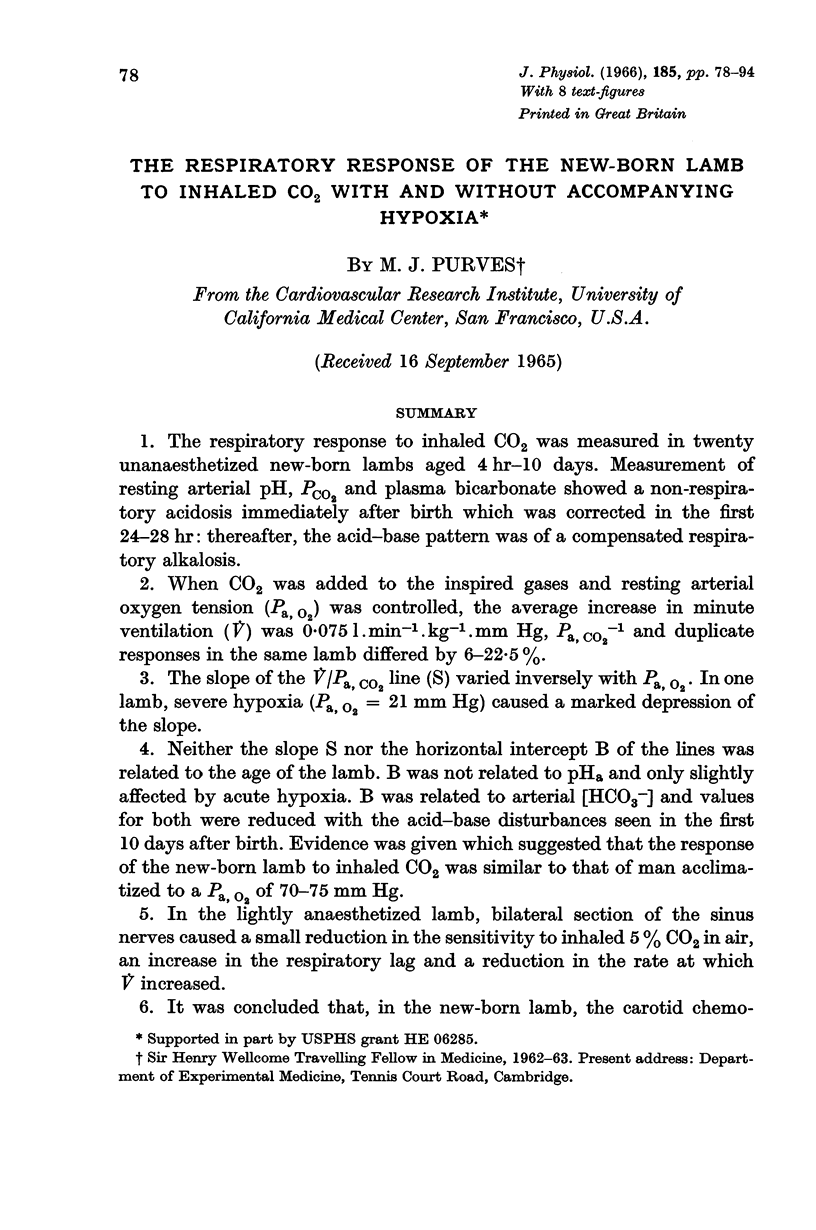
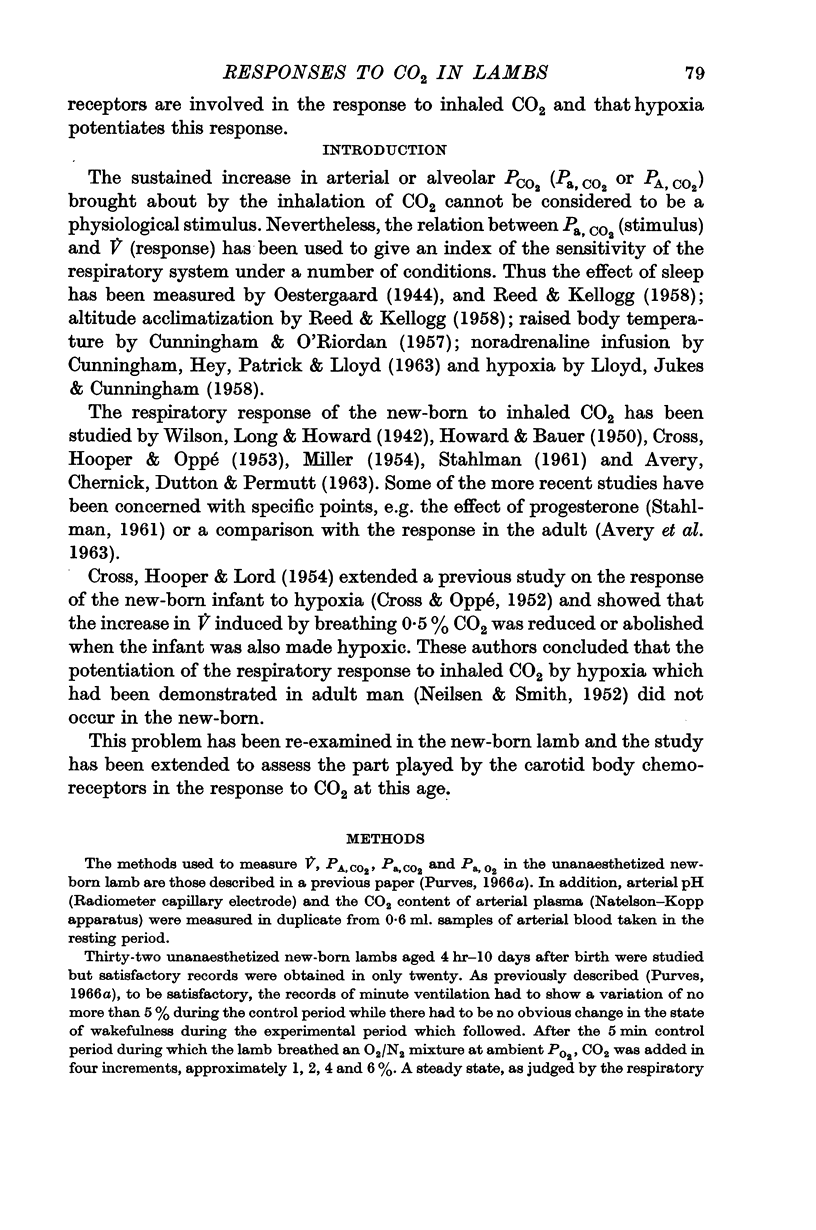
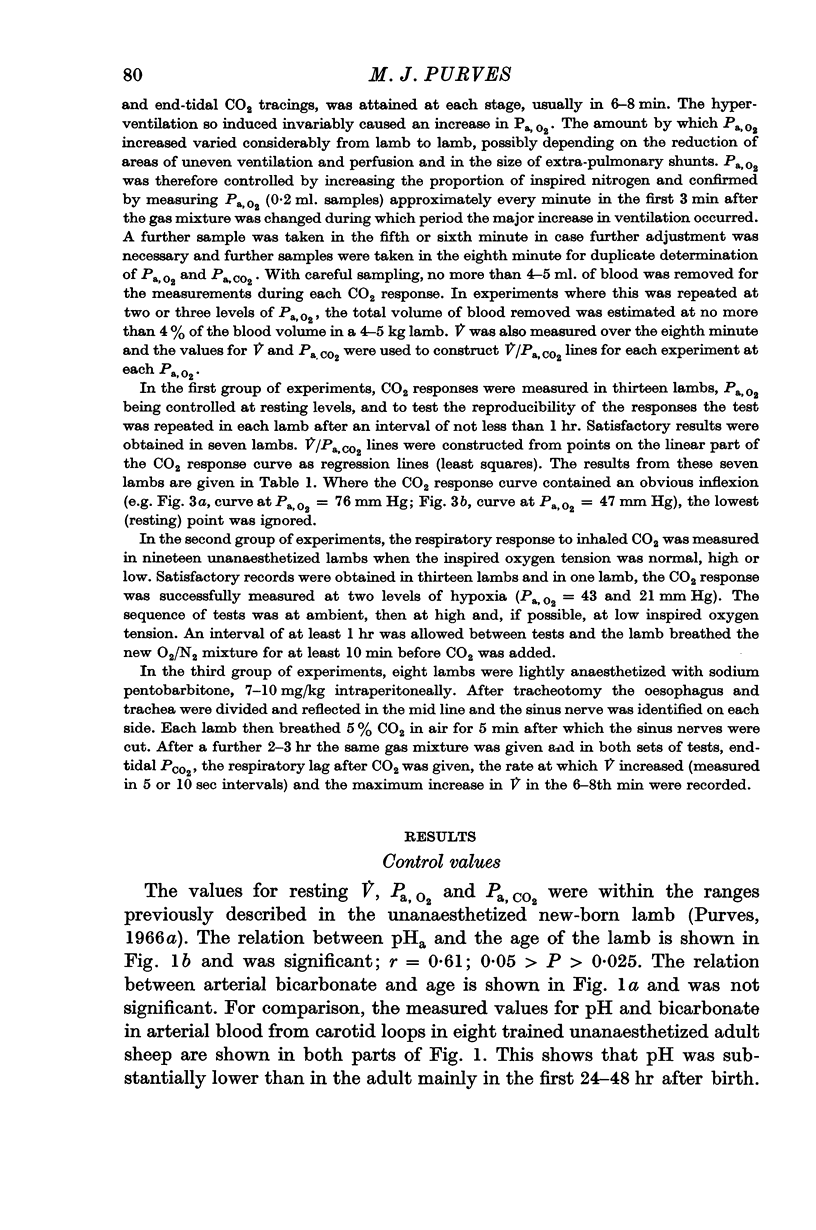
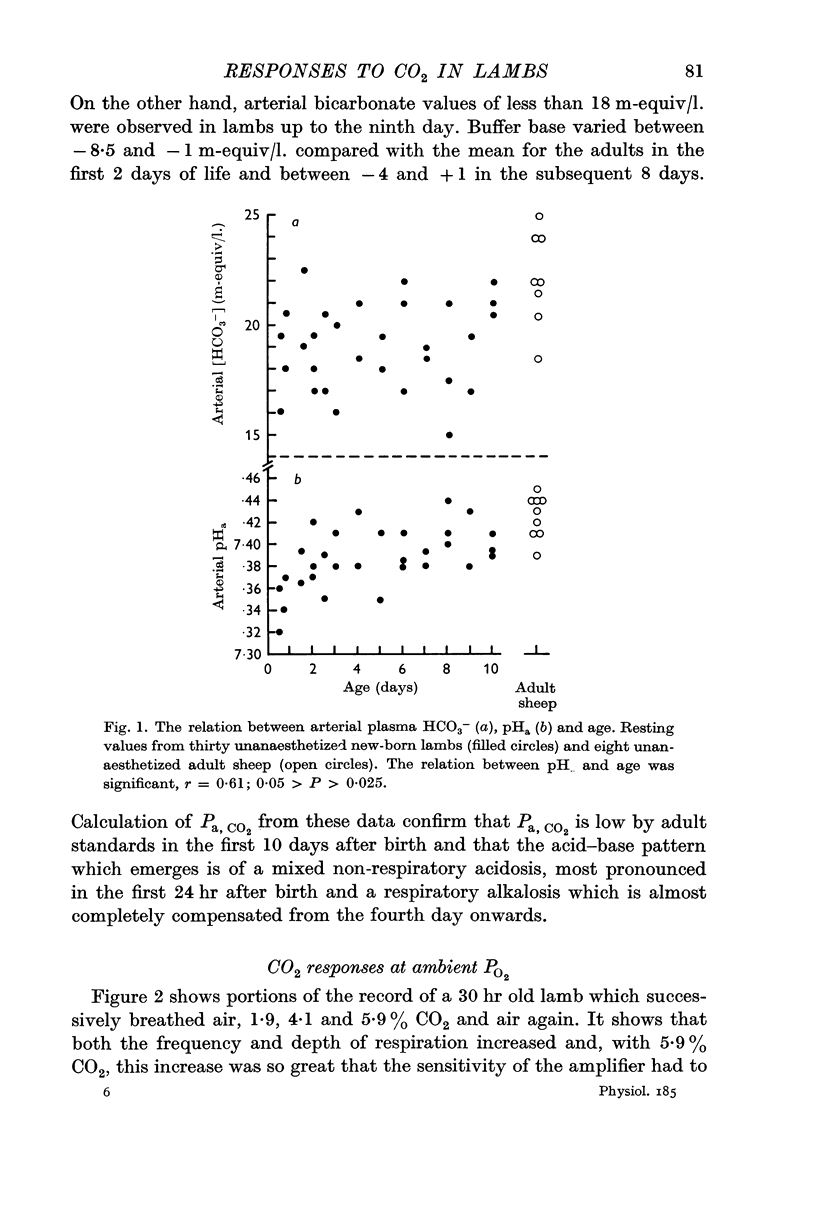
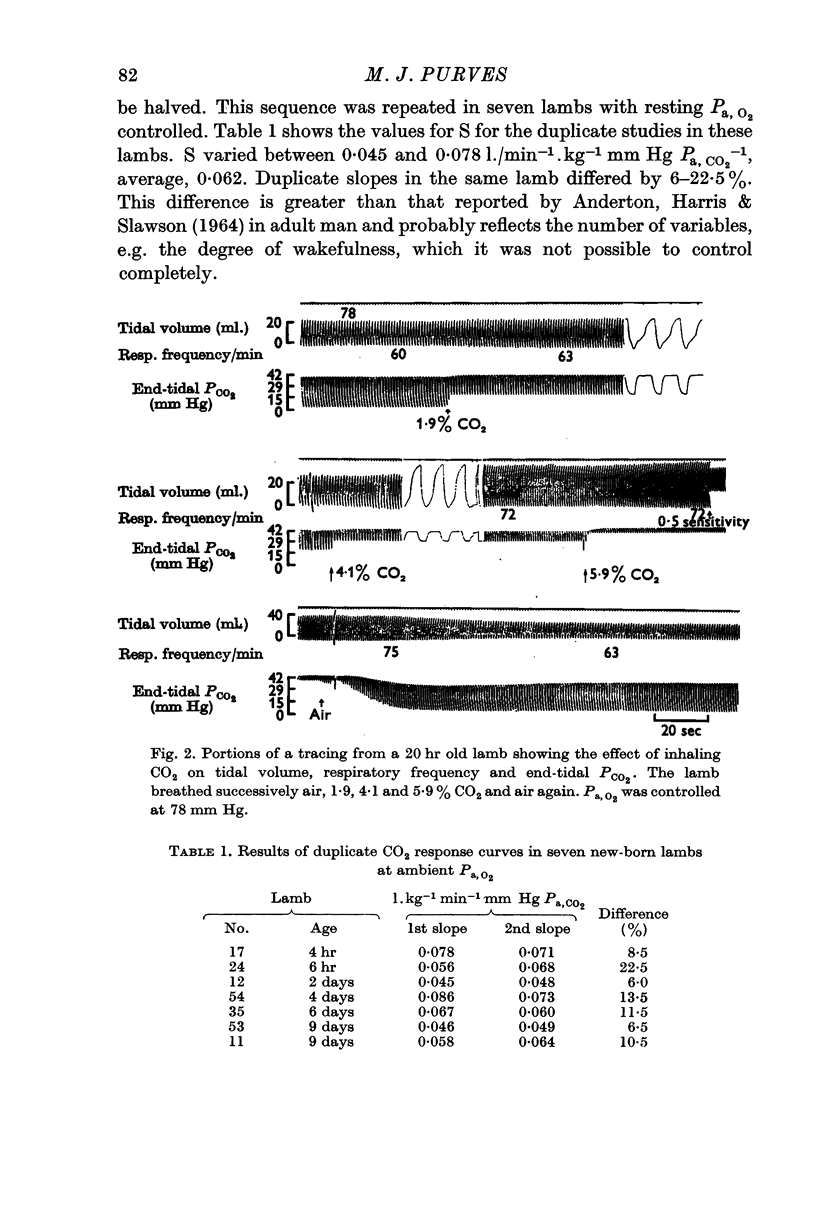
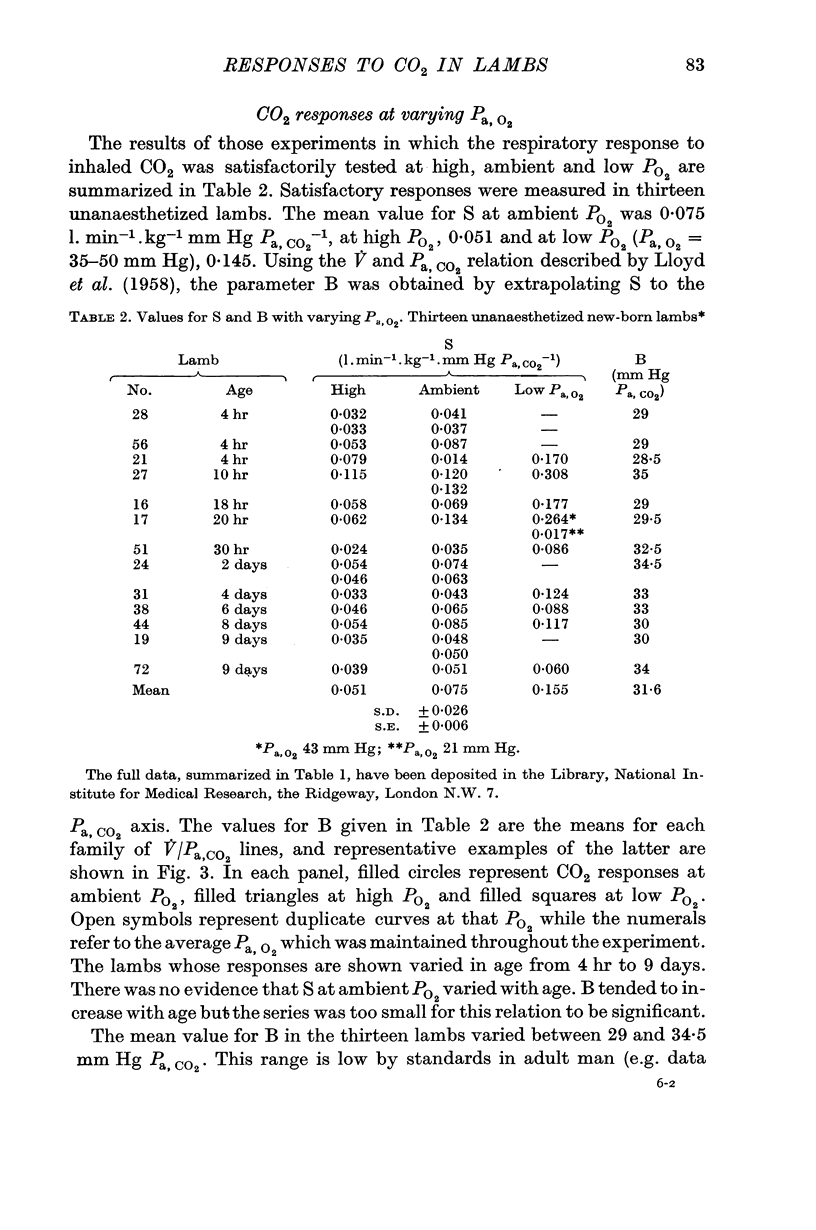
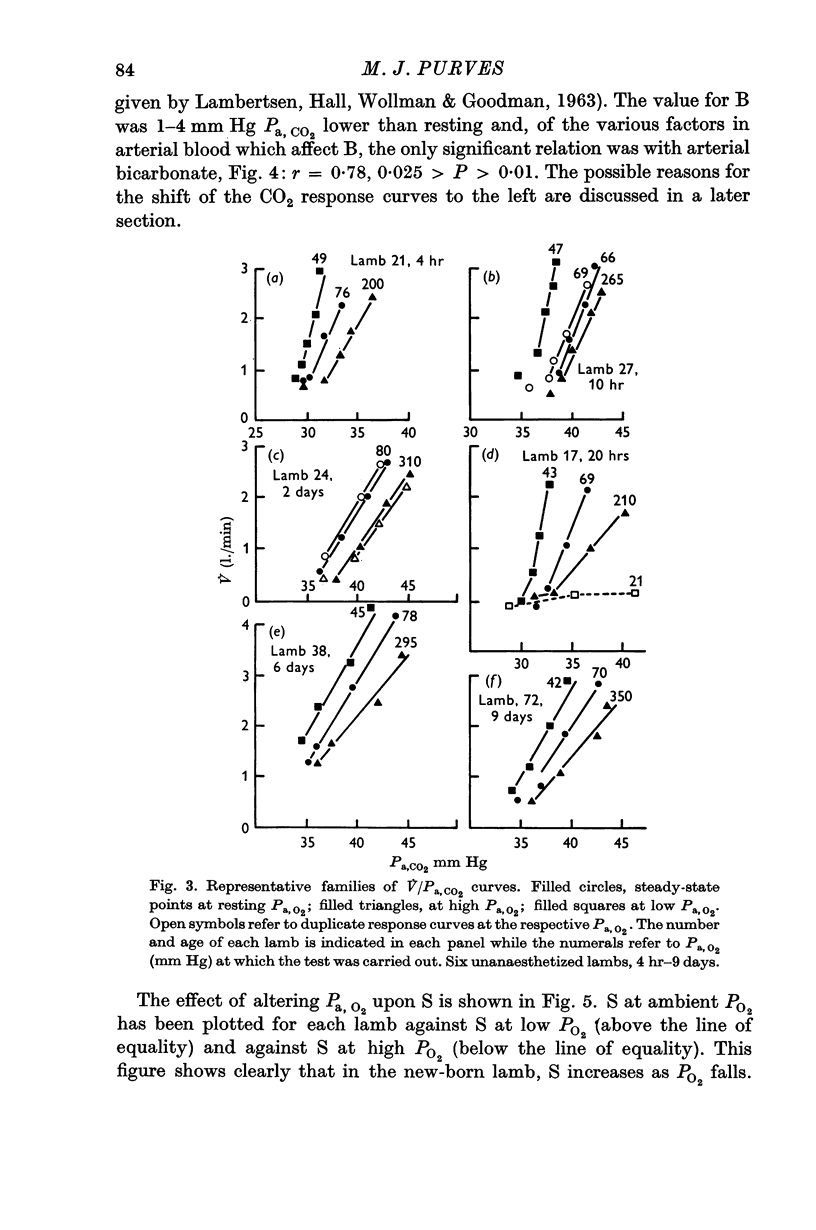
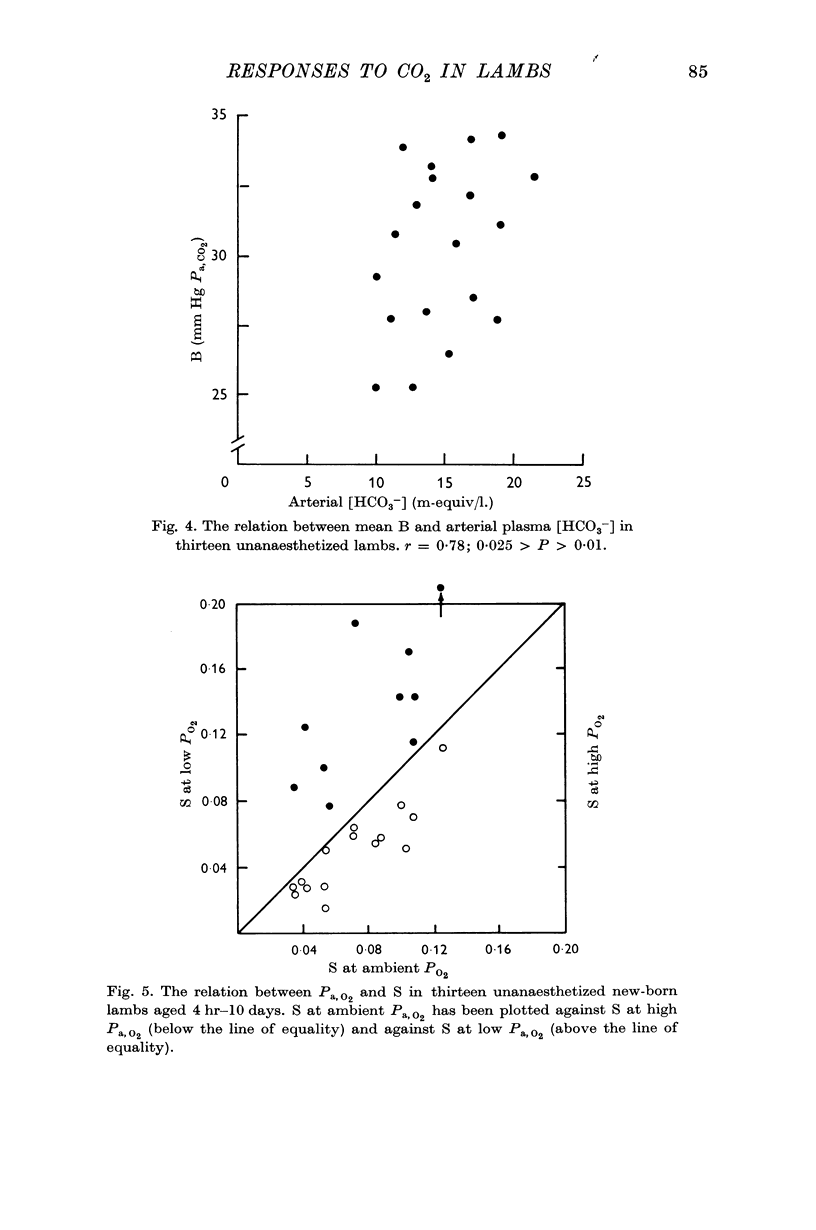
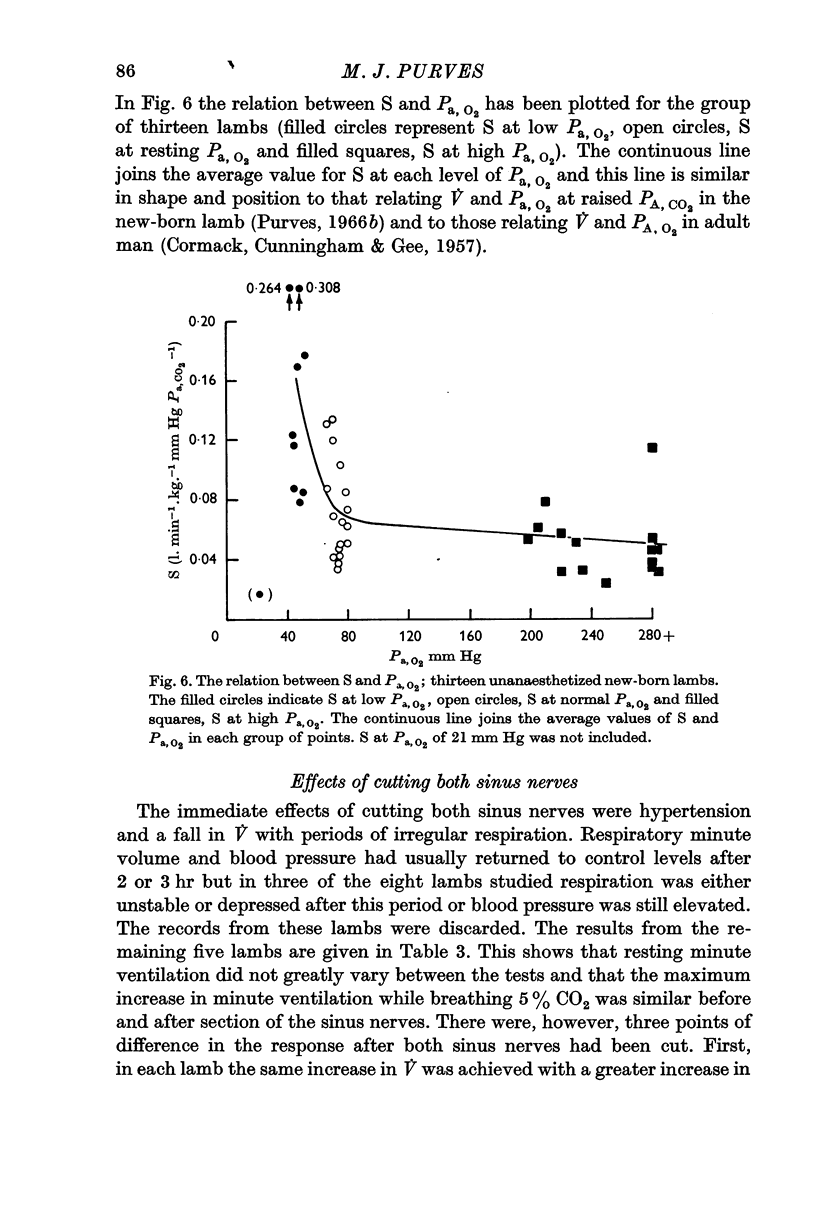
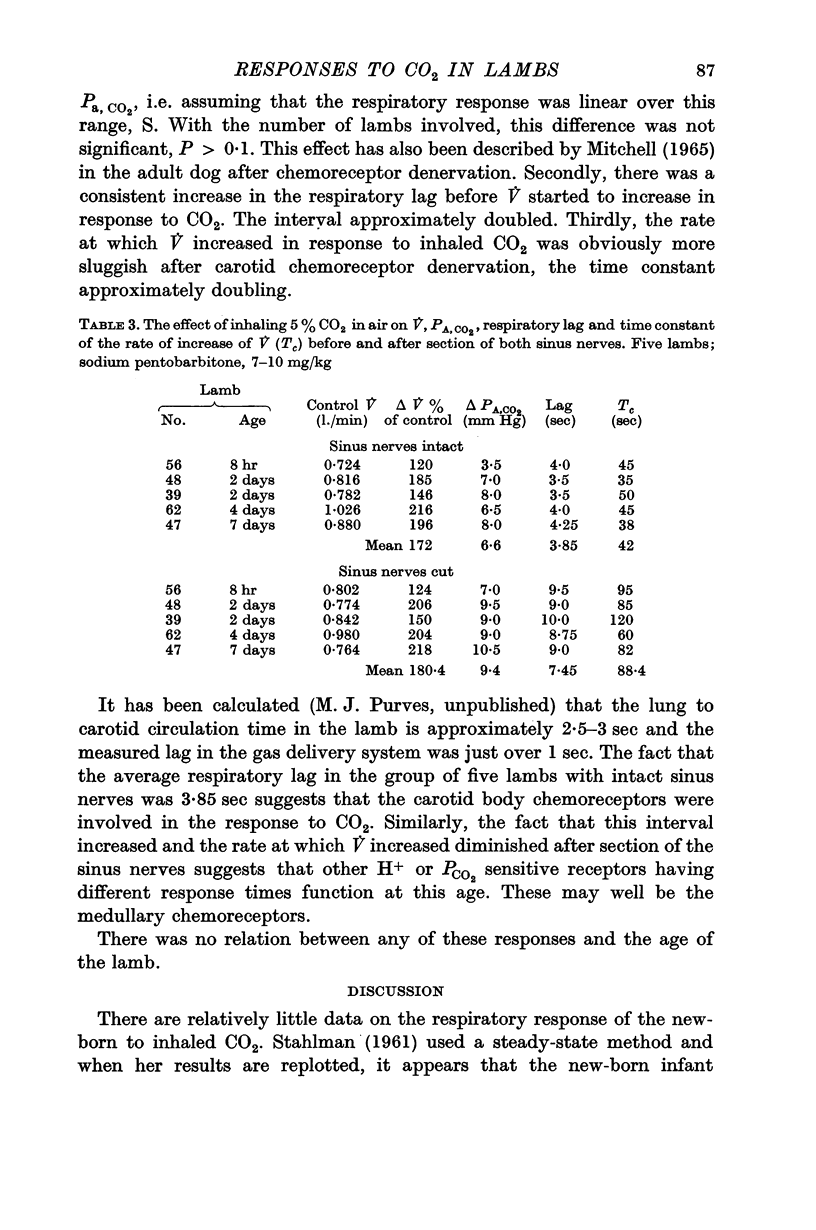
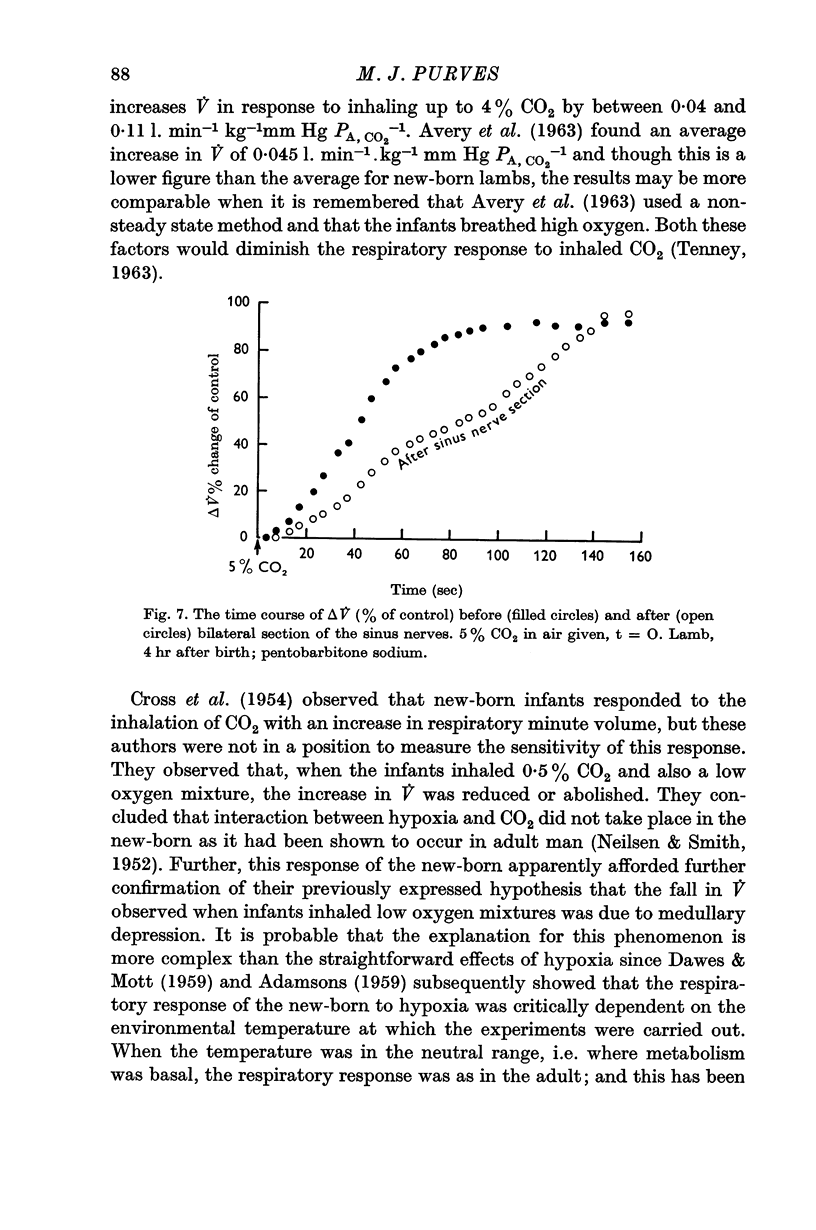
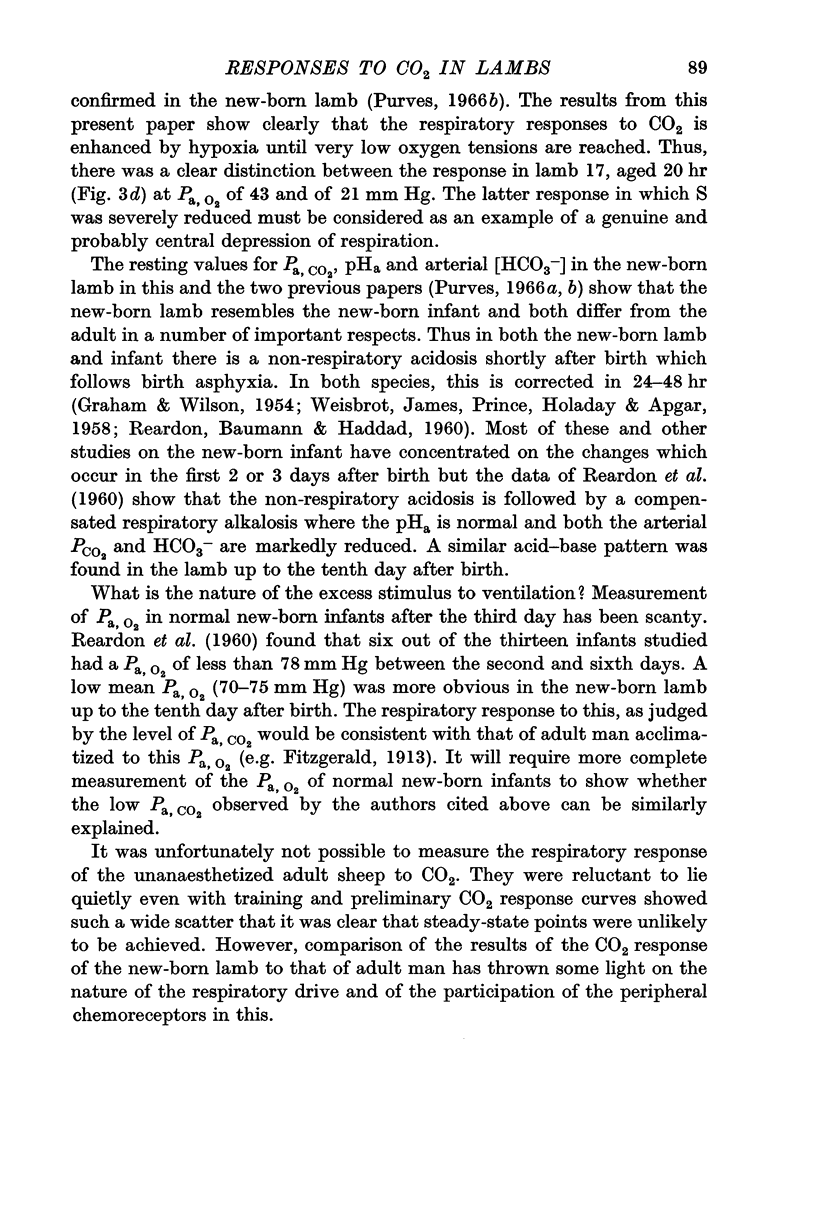
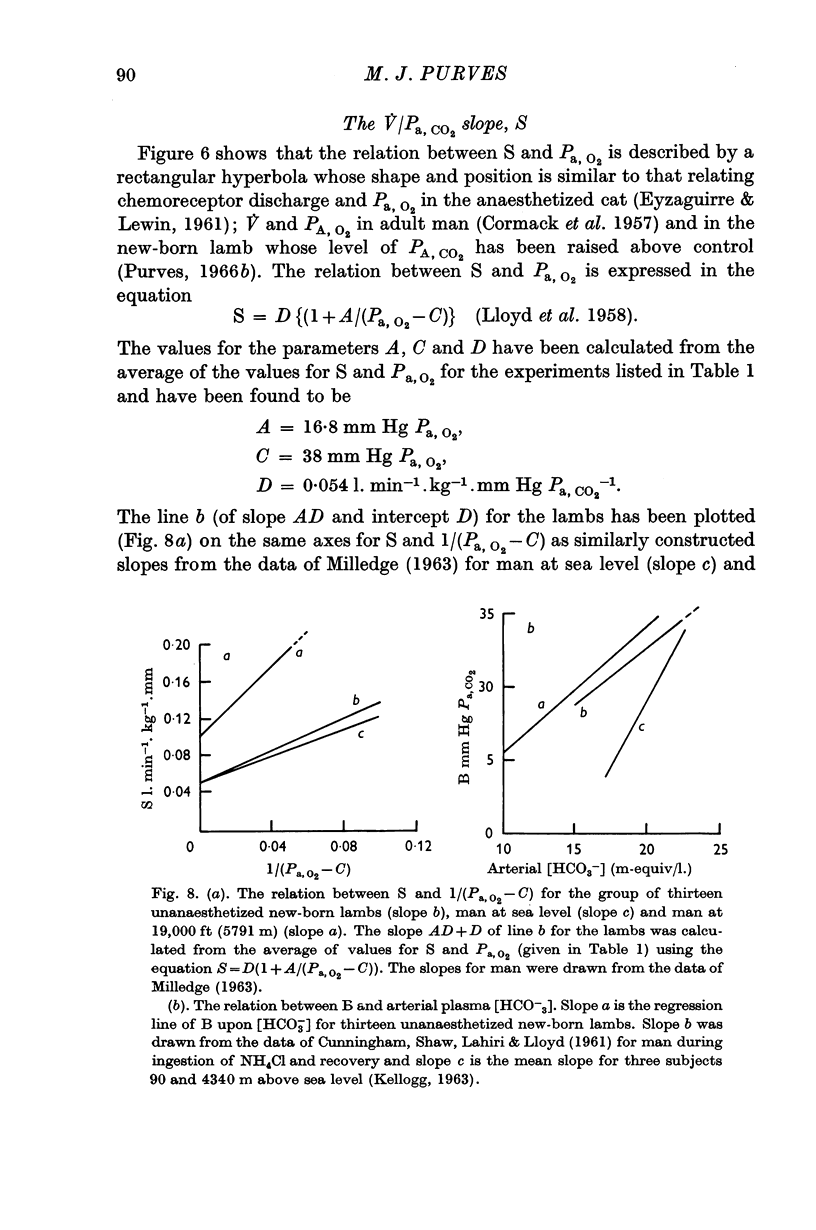
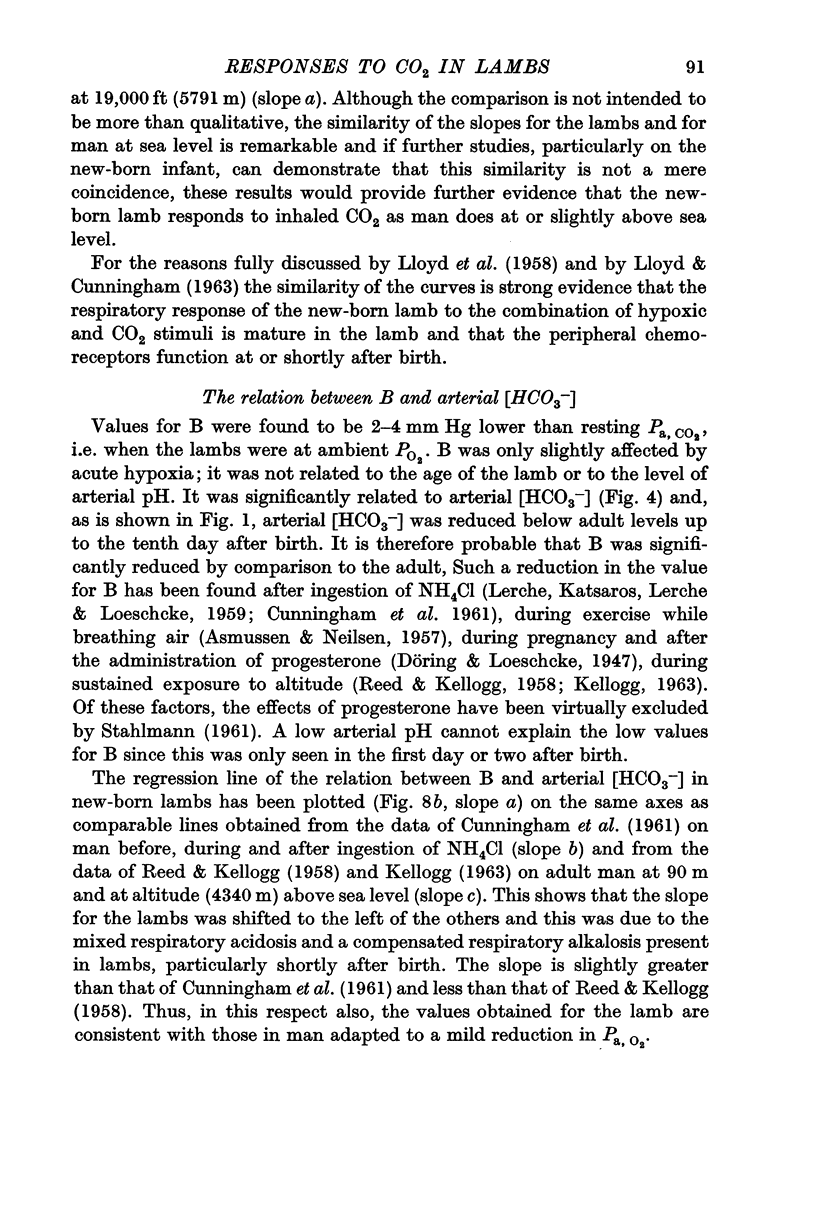
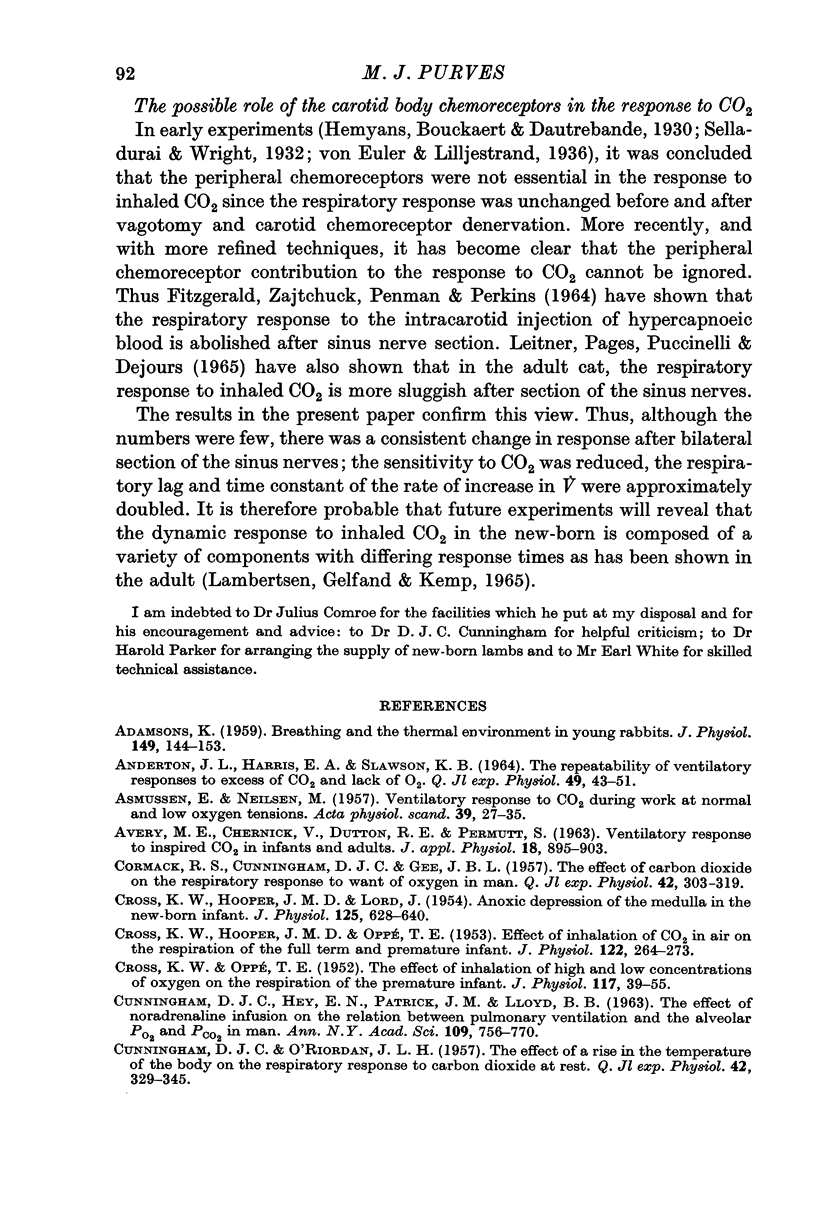
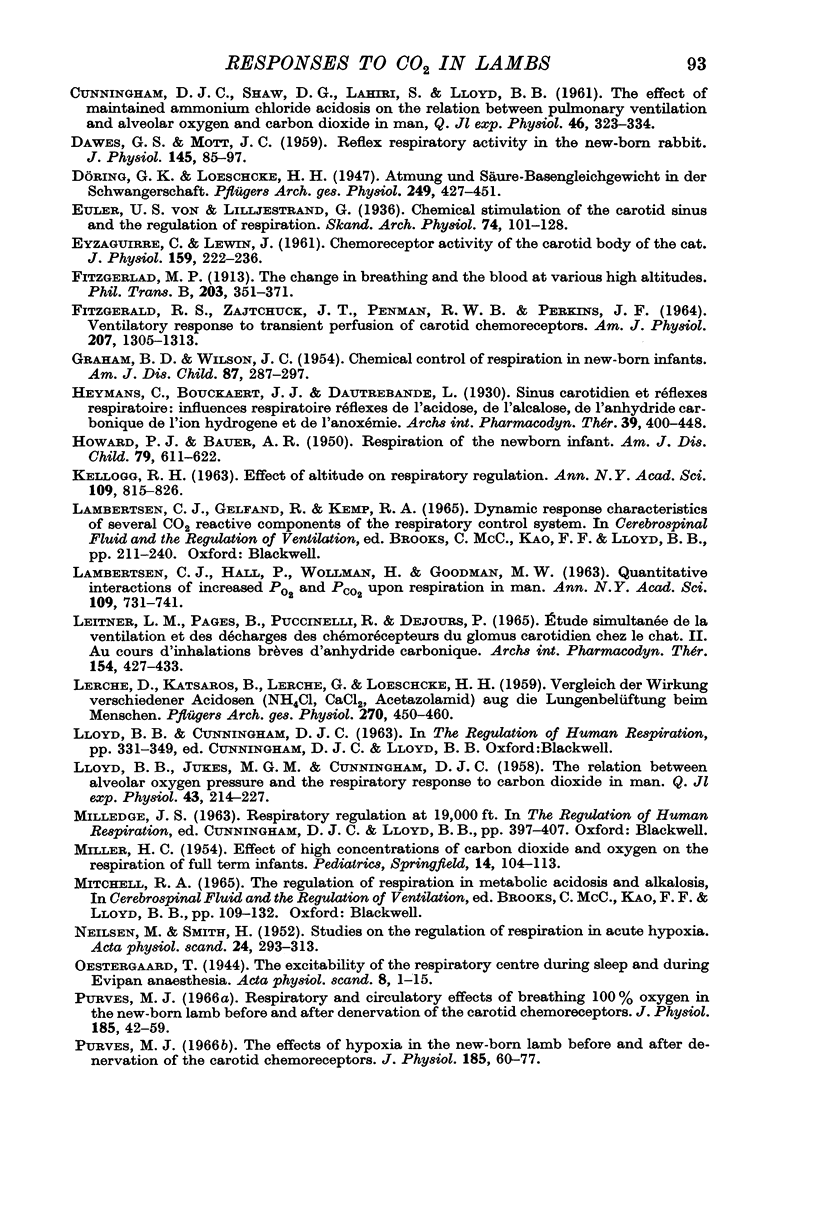
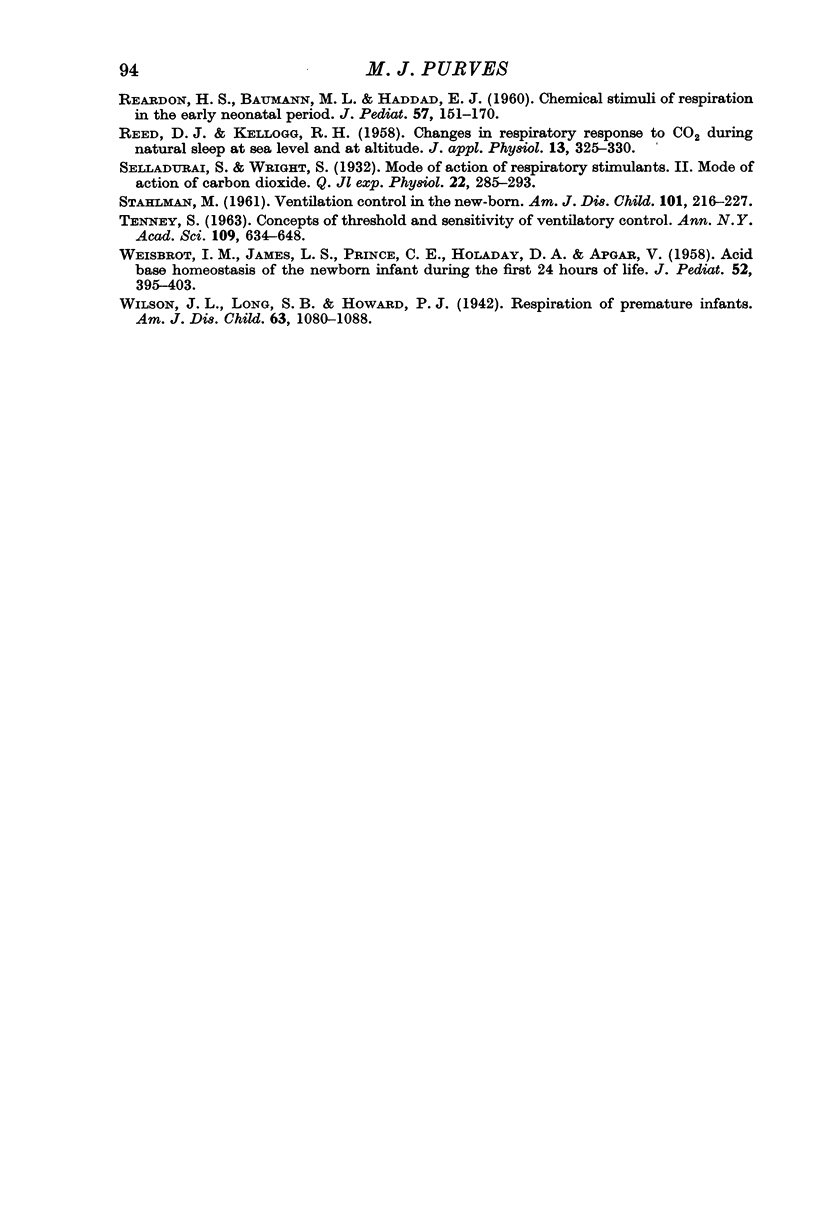
Selected References
These references are in PubMed. This may not be the complete list of references from this article.
- ADAMSONS K., Jr Breathing and the thermal environment in young rabbits. J Physiol. 1959 Dec;149:144–153. doi: 10.1113/jphysiol.1959.sp006331. [DOI] [PMC free article] [PubMed] [Google Scholar]
- ANDERTON J. L., HARRIS E. A., SLAWSON K. B. THE REPEATABILITY OF VENTILATORY RESPONSES TO EXCESS OF CARBON DIOXIDE AND LACK OF OXYGEN. Q J Exp Physiol Cogn Med Sci. 1964 Jan;49:43–51. doi: 10.1113/expphysiol.1964.sp001703. [DOI] [PubMed] [Google Scholar]
- ASMUSSEN E., NIELSEN M. Ventilatory response to CO2 during work at normal and at low oxygen tensions. Acta Physiol Scand. 1957 Apr 10;39(1):27–35. doi: 10.1111/j.1748-1716.1957.tb01406.x. [DOI] [PubMed] [Google Scholar]
- AVERY M. E., CHERNICK V., DUTTON R. E., PERMUTT S. VENTILATORY RESPONSE TO INSPIRED CARBON DIOXIDE IN INFANTS AND ADULTS. J Appl Physiol. 1963 Sep;18:895–903. doi: 10.1152/jappl.1963.18.5.895. [DOI] [PubMed] [Google Scholar]
- CORMACK R. S., CUNNINGHAM D. J., GEE J. B. The effect of carbon dioxide on the respiratory response to want of oxygen in man. Q J Exp Physiol Cogn Med Sci. 1957 Jul;42(3):303–319. doi: 10.1113/expphysiol.1957.sp001266. [DOI] [PubMed] [Google Scholar]
- CROSS K. W., HOOPER J. M., LORD J. M. Anoxic depression of the medulla in the new-born infant. J Physiol. 1954 Sep 28;125(3):628–640. doi: 10.1113/jphysiol.1954.sp005185. [DOI] [PMC free article] [PubMed] [Google Scholar]
- CROSS K. W., HOOPER J. M., OPPE T. E. The effect of inhalation of carbon dioxide in air on the respiration of the full-term and premature infant. J Physiol. 1953 Nov 28;122(2):264–273. doi: 10.1113/jphysiol.1953.sp004997. [DOI] [PMC free article] [PubMed] [Google Scholar]
- CUNNINGHAM D. J., HEY E. N., PATRICK J. M., LLOYD B. B. The effect of noradrenaline infusion on the relation between pulmonary ventilation and the alveolar PO2 and PCO2 in man. Ann N Y Acad Sci. 1963 Jun 24;109:756–771. doi: 10.1111/j.1749-6632.1963.tb13504.x. [DOI] [PubMed] [Google Scholar]
- CUNNINGHAM D. J., O'RIORDAN J. L. The effect of a rise in the temperature of the body on the respiratory response to carbon dioxide at rest. Q J Exp Physiol Cogn Med Sci. 1957 Oct;42(4):329–345. doi: 10.1113/expphysiol.1957.sp001278. [DOI] [PubMed] [Google Scholar]
- CUNNINGHAM D. J., SHAW D. G., LAHIRI S., LLOYD B. B. The effect of maintained ammonium chloride acidosis on the relation between pulmonary ventilation and alveolar oxygen and carbon dioxide in man. Q J Exp Physiol Cogn Med Sci. 1961 Oct;46:323–334. doi: 10.1113/expphysiol.1961.sp001550. [DOI] [PubMed] [Google Scholar]
- DAWES G. S., MOTT J. C. Reflex respiratory activity in the new-born rabbit. J Physiol. 1959 Jan 28;145(1):85–97. doi: 10.1113/jphysiol.1959.sp006129. [DOI] [PMC free article] [PubMed] [Google Scholar]
- EYZAGUIRRE C., LEWIN J. Chemoreceptor activity of the carotid body of the cat. J Physiol. 1961 Dec;159:222–237. doi: 10.1113/jphysiol.1961.sp006804. [DOI] [PMC free article] [PubMed] [Google Scholar]
- FITZGERALD R. S., ZAJTCHUK J. T., PENMAN R. W., PERKINS J. F., Jr VENTILATORY RESPONSE TO TRANSIENT PERFUSION OF CAROTID CHEMORECEPTORS. Am J Physiol. 1964 Dec;207:1305–1313. doi: 10.1152/ajplegacy.1964.207.6.1305. [DOI] [PubMed] [Google Scholar]
- GRAHAM B. D., WILSON J. L. Chemical control of respiration in newborn infants. AMA Am J Dis Child. 1954 Mar;87(3):287–297. doi: 10.1001/archpedi.1954.02050090275003. [DOI] [PubMed] [Google Scholar]
- KELLOGG R. H. Effect of altitude on respiratory regulation. Ann N Y Acad Sci. 1963 Jun 24;109:815–828. doi: 10.1111/j.1749-6632.1963.tb13508.x. [DOI] [PubMed] [Google Scholar]
- LAMBERTSEN C. J., HALL P., WOLLMAN H., GOODMAN M. W. Quantitative interactions of increased Po2 and Pco2 upon respiration in man. Ann N Y Acad Sci. 1963 Jun 24;109:731–742. doi: 10.1111/j.1749-6632.1963.tb13502.x. [DOI] [PubMed] [Google Scholar]
- LERCHE D., KATSAROS B., LERCHE G., LOESCHCKE H. H. [Comparison of the effect of various acidoses (NH4C1, CaC12, acetazolamide) on pulmonary ventilation in man]. Pflugers Arch Gesamte Physiol Menschen Tiere. 1960;270:450–460. [PubMed] [Google Scholar]
- LLOYD B. B., JUKES M. G., CUNNINGHAM D. J. The relation between alveolar oxygen pressure and the respiratory response to carbon dioxide in man. Q J Exp Physiol Cogn Med Sci. 1958 Apr;43(2):214–227. doi: 10.1113/expphysiol.1958.sp001319. [DOI] [PubMed] [Google Scholar]
- Leitner L. M., Pagès B., Puccinelli R., Dejours P. Etude simultanée de la ventilation et des décharges des chémorécepteurs du glomus carotidien chez le chat. II. Au cours d'inhalations brèves d'anhydride carbonique. Arch Int Pharmacodyn Ther. 1965 Apr;154(2):427–433. [PubMed] [Google Scholar]
- MILLER H. C. Effect of high concentrations of carbon dioxide and oxygen on the respiration of fullterm infants. Pediatrics. 1954 Aug;14(2):104–113. [PubMed] [Google Scholar]
- NIELSEN M., SMITH H. Studies on the regulation of respiration in acute hypoxia; with a appendix on respiratory control during prolonged hypoxia. Acta Physiol Scand. 1952 Feb 12;24(4):293–313. doi: 10.1111/j.1748-1716.1952.tb00847.x. [DOI] [PubMed] [Google Scholar]
- Purves M. J. Respiratory and circulatory effects of breathing 100 per cent oxygen in the new-born lamb before and after denervation of the carotid chemoreceptors. J Physiol. 1966 Jul;185(1):42–59. doi: 10.1113/jphysiol.1966.sp007971. [DOI] [PMC free article] [PubMed] [Google Scholar]
- Purves M. J. The effects of hypoxia in the new-born lamb before and after denervation of the carotid chemoreceptors. J Physiol. 1966 Jul;185(1):60–77. doi: 10.1113/jphysiol.1966.sp007972. [DOI] [PMC free article] [PubMed] [Google Scholar]
- REARDON H. S., BAUMANN M. L., HADDAD E. J. Chemical stimuli of respiration in the early neonatal period. J Pediatr. 1960 Aug;57:151–170. doi: 10.1016/s0022-3476(60)80049-2. [DOI] [PubMed] [Google Scholar]
- REED D. J., KELLOGG R. H. Changes in respiratory response to CO2 during natural sleep at sea level and at altitude. J Appl Physiol. 1958 Nov;13(3):325–330. doi: 10.1152/jappl.1958.13.3.325. [DOI] [PubMed] [Google Scholar]
- TENNEY S. M. Concepts of threshold and sensitivity of ventilatory control. Ann N Y Acad Sci. 1963 Jun 24;109:634–650. doi: 10.1111/j.1749-6632.1963.tb13494.x. [DOI] [PubMed] [Google Scholar]
- WEISBROT I. M., JAMES L. S., PRINCE C. E., HOLADAY D. A., APGAR V. Acid-base homeostasis of the newborn infant during the first 24 hours of life. J Pediatr. 1958 Apr;52(4):395–403. doi: 10.1016/s0022-3476(58)80059-1. [DOI] [PubMed] [Google Scholar]


